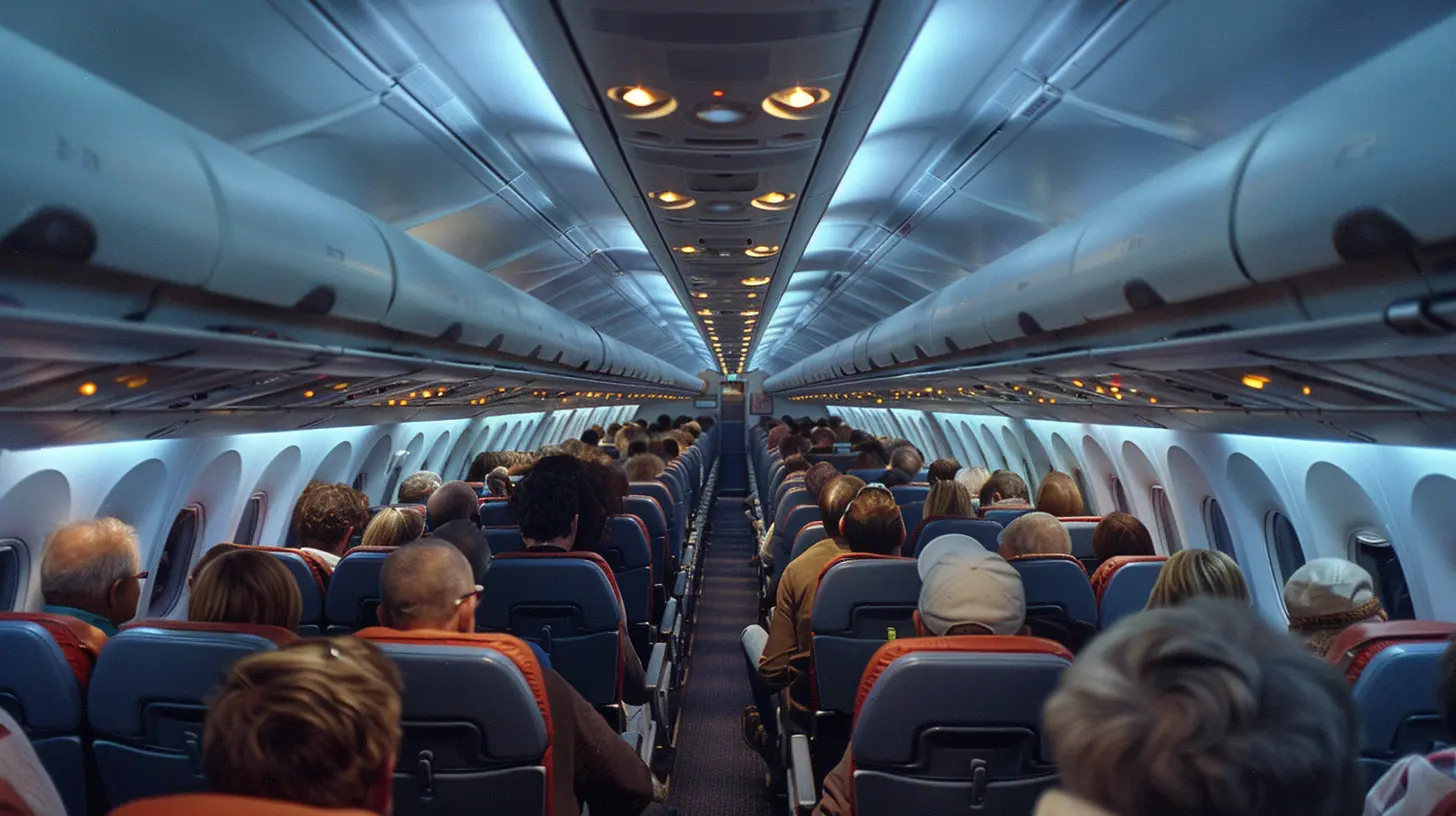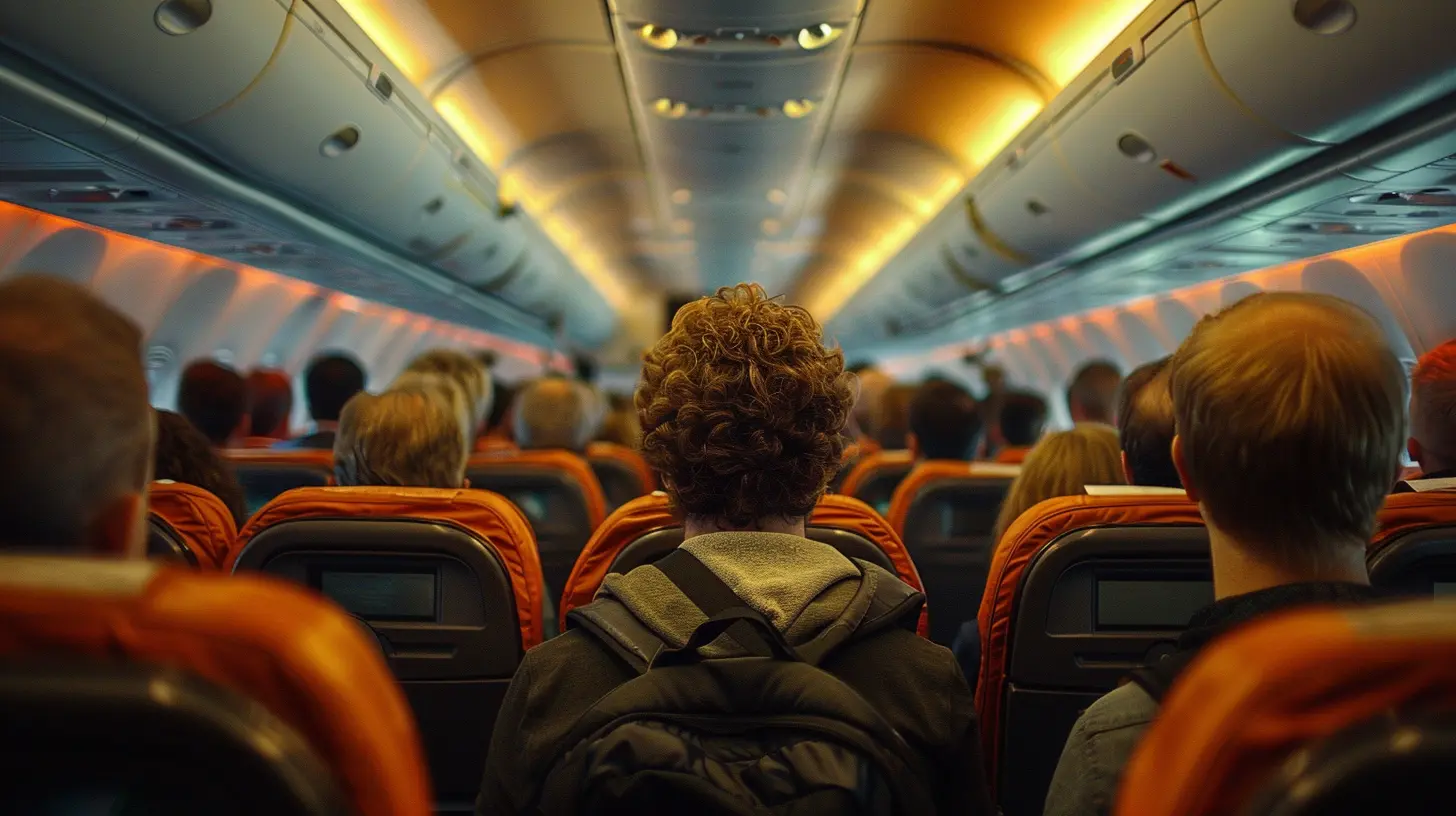How to Survive Turbulence: Tips from Frequent Flyers
5 November 2025
Air travel is one of those modern marvels that still feels a bit surreal, right? You're literally sitting in a pressurized metal tube, speeding across the sky at 35,000 feet. But just when you’re starting to enjoy your airline peanuts and in-flight movie, the seatbelt light dings and suddenly — bam! — the whole plane jolts like someone hit a pothole in the clouds.
Yep, we’re talking about turbulence — the one thing that can make even the most seasoned traveler grip the armrest like it’s a lifeline.
But guess what? Turbulence isn’t as scary as it feels. Not when you know what’s really going on up there... and especially not once you’ve picked up a few tricks from some seriously frequent flyers.
So buckle up (pun totally intended). We’re about to take a smooth glide through the choppy skies of aviation anxiety.
What is Turbulence, Really?
Think of turbulence as rough patches in the sky. Just like how a car hits bumps on the road, planes run into invisible currents of moving air that make them jiggle around a bit.There are different types — clear air turbulence (the sneaky kind with no warning), thermal (caused by hot air rising), mechanical (thanks to mountains or buildings messing with the wind), and wake turbulence (from other planes).
It sounds ominous, but here’s the kicker: turbulence doesn’t mean the plane is falling. It’s just being nudged this way and that by air. It’s like floating on a breezy river — annoying but harmless.
Why Turbulence Feels Worse Than It Is
Here’s the truth bomb: planes are built to withstand intense turbulence. We're talking wings flexing like giant rubber bands and fuselages engineered to handle staggering forces. Pilots? They’re trained for this stuff from Day 1, and most of them have dozens of turbulence stories under their belt.So why does it still make your stomach do cartwheels?
Blame it on your brain. When you’re thousands of feet above the ground and the plane hiccups unexpectedly, your instinctive alarm bells go wild. Your inner caveman doesn’t understand air travel — it assumes you're falling off a cliff. Toss in a few cup rattles and a nervous glance from a fellow passenger and — boom — anxiety overload.
But frequent flyers? They’ve cracked the turbulence code.
Tip #1: Pick Your Seat Strategically
Ever heard the phrase “ride the wings”? Frequent flyers live by it. The smoothest ride is over the wings of the plane — physics backs this up. That’s where the aircraft’s center of gravity is. The further you go from that center (especially toward the tail), the bumpier it gets.So next time you book, forget the window in the back near the lavatories. Go for a seat over the wings for a smoother flight.
Bonus tip: First class and business class toward the front tend to feel less swayed too — but you’ll pay a pretty penny for that comfort!
Tip #2: Strap In — Always
You’ve probably heard it a hundred times: "Keep your seatbelt fastened while seated." But do you?Frequent flyers do. Always.
Why? Because the most dangerous turbulence is the kind that hits out of the blue. They call it “clear air turbulence” — no clouds, no warning, just a sudden jolt that can send unbuckled passengers (and loose laptops) flying.
So wear your seatbelt like a sky-high seatbelt — snug and low across your lap. It may just save you from hitting the ceiling... literally.
Tip #3: Know When to Expect It
Did you know turbulence is more common at certain altitudes, places, and times?Frequent flyers keep an eye on these patterns:
- Afternoon flights tend to get bumpier due to thermal turbulence (all that warm air rising).
- Flights over mountains can get shaky due to mechanical turbulence.
- Summer months are often worse than winter when it comes to turbulent weather.
- Jet streams — those high-altitude air rivers — can stir up clear air turbulence fast.
Pro move: download a turbulence forecast app like Turbulence Forecast or MyFlight Forecast. It’s not 100% accurate, but it helps to know what you’re flying into.
Tip #4: Trust the Pilots (They Hate Turbulence Too)
Here’s something reassuring: pilots don’t like turbulence either. Not because they're scared — they just find it annoying, like driving on a bumpy road.They’re trained to avoid it whenever possible. They check weather reports, radar maps, and even get updates from other aircraft en route. If things get rough, they’ll adjust altitude, change course, or even delay the flight.
Plus, on commercial jets, pilots will almost always get permission to fly around storms or reroute to calmer air. You're in very capable hands.
Tip #5: Distract Your Senses
Let’s be real — sometimes knowing the science isn’t enough. When that stomach-lurching dip hits mid-flight, your brain doesn’t care about physics.That’s when you need distractions.
- Noise-canceling headphones — block out those unsettling engine hums or creaks (which are usually harmless).
- Watch a comedy — laughter really is the best medicine for nerves.
- Read a book — nothing too intense; you don’t need a thriller during a bumpy patch.
- Play a game on your phone or tablet — puzzle games work wonders.
- Breathe. Slowly. Four seconds in, hold for four, then exhale for four. It really helps reset your fight-or-flight response.
Tip #6: Tell the Cabin Crew You’re Nervous
You’d be surprised how many frequent flyers started off as nervous ones.One of the best tricks? Just let a flight attendant know you’re a little anxious. They’ve seen it all — crying passengers, white-knuckled grips, full-blown panic attacks. They’ll check on you during turbulence, reassure you it’s normal, and sometimes even give you tips to get through it.
Plus, they know the flight’s game plan — they can tell you when it’s likely to end and what the pilots are doing about it.
Tip #7: Keep Your Eyes on the Crew
If the turbulence hits and you feel panic rising, steal a glance at the flight attendants. Are they casually rolling that drinks cart or chatting with passengers like nothing's happening?Good sign.
Cabin crew are like the emotional barometer of the sky. If they don’t seem worried, you shouldn’t be either.
Tip #8: Hydration Over Stimulants
Flying already dehydrates you. Add stress from turbulence and bam — you've got yourself a headache and a dry mouth.Drink water. Lots of it.
Avoid caffeine or alcohol before and during the flight if turbulence makes you anxious. Caffeine can heighten jitters, and alcohol might mess with your sense of balance, making the bumps feel even weirder.
Stick to water or calming herbal teas. Your nervous system will thank you.
Tip #9: Upgrade Your Mindset
This one takes practice, but frequent flyers swear by it.Instead of dreading turbulence, expect it. Accept it. Maybe even embrace it.
Try to tell yourself: “This is totally normal. The plane is built for this. The pilots deal with it daily. It’s annoying, not dangerous.”
Changing your mindset doesn’t erase the bumps, but it definitely smooths out how you experience them.
Tip #10: Fly Often!
Like anything in life, the more you experience flying — including turbulence — the less it rattles you.Frequent flyers have one big advantage: exposure. After dozens or even hundreds of flights, you kinda get used to the bumps. You stop bracing after every shake. It becomes background noise.
If you fly infrequently, consider doing short regional trips as practice. Think of it like building “sky legs.”
The Truth Behind Those Scary Drops
You know that feeling like the plane just dropped out of the sky? Like your stomach’s suddenly hanging out somewhere near your throat?It’s actually not as extreme as it feels.
In moderate to severe turbulence, a plane might change altitude by just 10 to 40 feet. That’s it. Thanks to how your inner ear and body react, it feels like a nosedive, but in reality, it’s minor.
Again, the key is reminding your brain that your body is overreacting for no reason. It’s like a haunted house — spooky, sure, but you’re not in real danger.
Bonus: Turbulence and Plane Crashes – Just the Truth, Please
This might be your biggest fear, so let’s tackle it head-on.Can turbulence crash a plane?
In modern aviation? Almost never.
Severe turbulence has caused injuries — usually to unbuckled passengers and flight attendants. But actual crashes from turbulence on commercial flights? Nearly unheard of in recent decades.
Planes are engineered to handle the worst. You’re far more likely to get hurt slipping in the airport bathroom than from turbulence mid-flight.
Final Thoughts
Turbulence may feel chaotic, but it’s really just nature doing its thing. Ask any frequent flyer, and they'll tell you: once you understand it — and equip yourself with the right mindset, tools, and tactics — it stops being terrifying and starts becoming just another part of the journey.So the next time you're mid-flight and the seatbelt sign dings on, you'll be armed with the knowledge (and inner calm!) to ride it out like a turbulence-slaying pro.
And who knows? You might just end up comforting your fellow passengers like the sky-savvy flyer you’ve become.
all images in this post were generated using AI tools
Category:
Flights And AirlinesAuthor:

Pierre McKinney
Discussion
rate this article
1 comments
Russell Matthews
Turbulence can be unnerving, but staying calm is key. Frequent flyers recommend focusing on your breathing, securing your seatbelt, and distracting yourself with music or a good book. Remember, turbulence is a normal part of flying, and pilots are well-trained to handle it. Enjoy your journey and embrace the adventure!
November 9, 2025 at 4:35 PM

Pierre McKinney
Thank you for your insights! Staying calm and using distractions are great strategies to manage turbulence. Safe travels!


